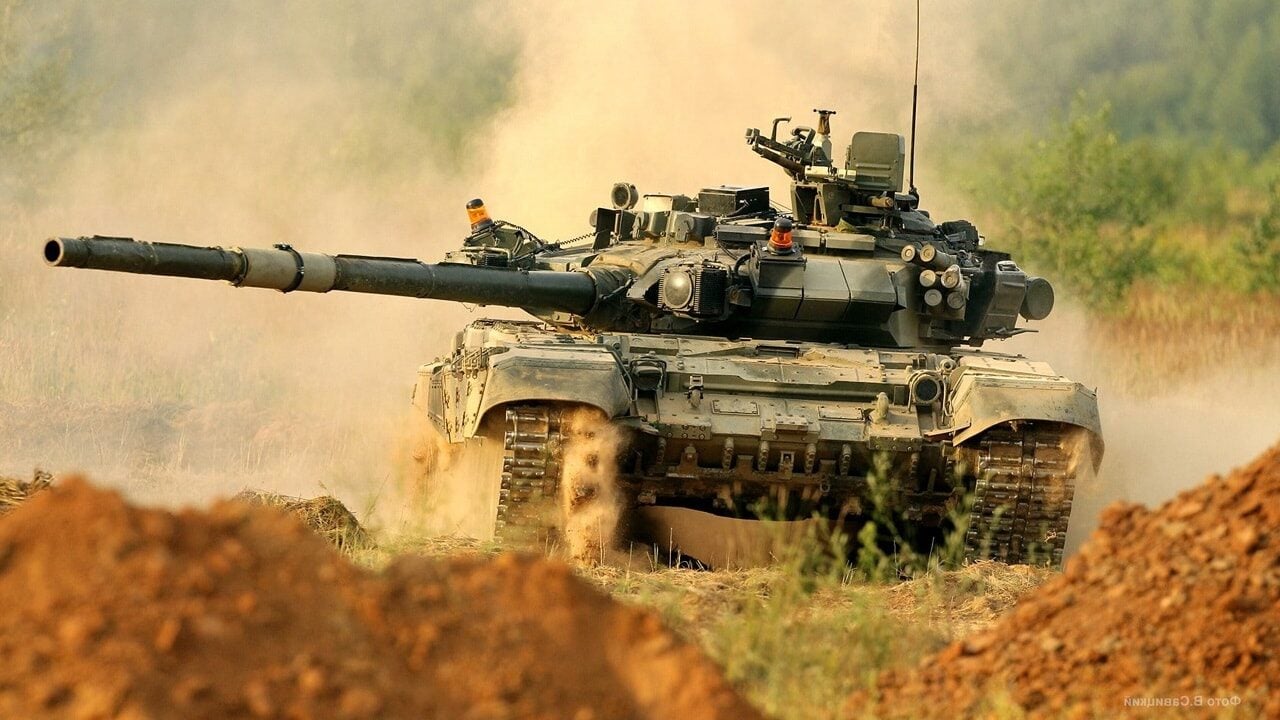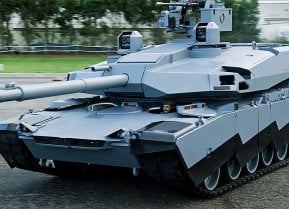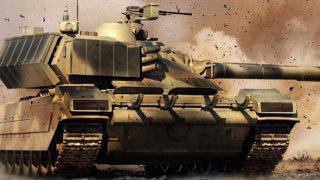T-95: The Russian Super Tank That Never Left the Drawing Board
While Moscow’s fleet of tanks continues to suffer in Kyiv, the Kremlin surely wishes it possessed the “would-be” T-95 tank. Beginning in the late 1980s, the fourth-generation tank – internally designated as the Object 195 – was expected to bring unmatched capabilities to the battlefield.
Meet Russia's T-95 Tank: Russia’s ongoing invasion of Ukraine has highlighted the critical role that main battle tanks can play in modern conflicts. While tanks have been used in battle for more than a century, their unique capabilities and the protection they provide make them unparalleled combat systems.
Since February 2022, both Moscow and Kyiv have deployed a variety of MBTs. From antiquated Soviet Era armored vehicles to German-made Leopard 2s, different variants of tanks have supported both country’s respective war efforts. Moscow’s fleet of armored vehicles has perhaps suffered the most since the war commenced. Experts estimate that more than half of Russia’s tank arsenal remains today and is expected to diminish further once the promised influx of Western-made MBTs hits the battlefield.
For more than 21 months, the Kremlin has turned to its storage of aging tanks to fulfill its offensive aims in Ukraine. The Soviet-era T-54/T-55, T-60, T-70, T-90, and even a few T-14 Armata MBTs were temporarily deployed to the front lines of the war.
Amidst heavy sanctions, however, ongoing production and proper maintenance of these armored vehicles has not been possible. Combined with Ukraine’s arsenal of domestic and foreign-imported anti-tank weaponry, these issues have led to the large obliteration of Russia’s MBTs in the war.
Introducing the T-95
While Moscow’s fleet of tanks continues to suffer in Kyiv, the Kremlin surely wishes it possessed the “would-be” T-95 tank. Beginning in the late 1980s, the fourth-generation tank – internally designated as the Object 195 – was expected to bring unmatched capabilities to the battlefield.
Around this time, engineers reportedly began work on this tank, however, the project was ultimately canceled in 2010. This “super tank” was intended to replace aging Soviet-era MBTs like the T-72 and T-80 to better compete with NATO’s (The North Atlantic Treaty Organization) own rivals.
Following the collapse of the USSR, manufacturer Omsktransmash developed a “Black Eagle” variant of the existing T-80 tank. This new model was supposed to feature greater capabilities than its predecessor. Considering the T-80’s dismal performance in the First Chechen War, the Black Eagle program was nixed.

Over the next few years, the manufacturing group Uralvagonzavod would take the place of Russia’s top tank builder. Once the T-95 was underworks, the Russian military hoped that it would lead the way in its second war against Chechnya. Ultimately, however, the tank never came to fruition.
What Made the T-95 “Ahead of its Time?”
Wanting its new T-95 tank to demolish NATO’s counterparts and perform effectively in Chechnya, the tank was designed with key enhancements in mind. Reportedly, the T-95 was fitted with a 152mm smoothbore model gun, which is more powerful than what the Allies’ tanks were using at the same.
Located in an automated turret, this gun would have enabled the tank’s crew members to remain within the hull when operating the tank. In theory, combined with its intended explosive-reactor armor, this would have improved the survivability of the T-95’s crew.
In terms of technological advancements, the Russian tank design featured even more unique capabilities. The T-95 would have allegedly been equipped with a digital information management system, which would have provided its crew members with accurate information regarding fuel and ammunition levels, as well as shared intelligence with other Russian MBTs on the battlefield.
Similarities Between the T-95 and T-14
Although the T-95 was never introduced to service with Russia’s military, many of the tank’s attributes have been implemented in the T-14 Armata. Some analysts assert that the T-95 was far too ahead of its time, which led to the tank’s demise. Others insist that the failed program actually laid the groundwork for the Armata, however, the T-14 is fitted with a more traditional 125mm main gun.
As explained by Wesley Culp, “Other T-95 technologies were applied to the T-14 to improve survivability, which, however, were much more novel when the T-95 was still under development. However, like the T-95, the Armata has run into many of the same problems and most characteristic issues of the Russian defense industry, which is a lack of money for prolonged R&D and serial production of significantly advanced models.”
Moscow temporarily deployed its Armata tanks to Ukraine in the Spring. While the Kremlin has long touted that these formidable MBTs could overcome any Western rival in service today, the Armata did not perform up to standards in Ukraine.
Earlier this year, British military intelligence reported that Moscow was resistant to sending its T-14 MBTs into battle in Kyiv due to their poor condition, noting that “Production is probably only in the low tens, while commanders are unlikely to trust the vehicle in combat. Eleven years in development, the program has been dogged with delays, reduction in planned fleet size, and reports of manufacturing problems.”
Now that the American M1A1 Abrams, British Challenger, and German Leopard 2s are expected to hit the battlefield in no time, Moscow’s remaining tank fleet is in trouble.
Maya Carlin is an analyst with the Center for Security Policy and a former Anna Sobol Levy Fellow at IDC Herzliya in Israel. She has by-lines in many publications, including The National Interest, Jerusalem Post, and Times of Israel. You can follow her on Twitter: @MayaCarlin.
Image Credit: All Images are Creative Commons.


